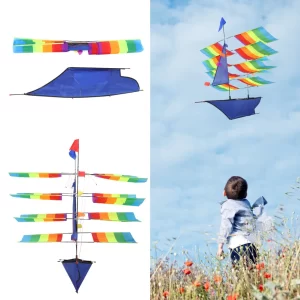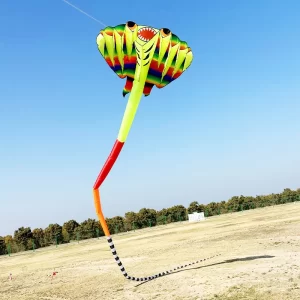
Kite flying is a timeless activity enjoyed by people of all ages around the world. Whether you’re a seasoned enthusiast or a beginner looking to take flight, choosing the right kite can make all the difference in your experience. One of the first decisions you’ll face is whether to opt for a big or small kite, and whether a single-string or double-string kite suits your needs best. Let’s explore the options to help you make an informed choice.
Size Matters: Big or Small?
When it comes to kite size, bigger isn’t always better, especially for beginners. Larger kites tend to require more wind to stay aloft and can be more challenging to control, especially in gusty conditions. Smaller kites, on the other hand, are generally lighter, easier to handle, and can fly in lighter winds, making them ideal for beginners. They are also easier to transport and set up, making them a convenient choice for impromptu kite-flying adventures.
Single-String vs. Double-String Kites
The simplicity of a single-string kite makes it a popular choice for beginners and children. With just one string to control the kite’s direction, height, and speed, mastering the basics of kite flying becomes straightforward and enjoyable. Single-string kites often come in traditional diamond or delta shapes, which are stable and forgiving in the air. They are great for leisurely flights in parks or on the beach, allowing you to focus on the joy of flying without worrying about complex controls.
On the other hand, double-string kites, also known as stunt kites or sport kites, offer a more dynamic flying experience. With two control lines, you can perform tricks, loops, and dives, making them popular among experienced flyers and enthusiasts who enjoy a challenge. While double-string kites can be exhilarating once you’ve mastered the controls, they do require more skill and practice to fly smoothly compared to single-string kites.
Shapes and Styles for Easy Flying
When it comes to shapes and styles, certain designs are known for their ease of flying:
Ultimately, the easiest style of kite to fly depends on your experience level, local wind conditions, and personal preferences. For beginners, starting with a small, single-string kite like a diamond or delta shape is often the best choice. These kites are forgiving, easy to control, and provide a delightful introduction to the world of kite flying. As you gain confidence and experience, you can explore larger kites or experiment with double-string designs for a more challenging flying experience.
Whether you’re flying solo or enjoying a day at the park with family and friends, choosing the right kite ensures a memorable and enjoyable experience. So, pick your kite, find a wide-open space with a gentle breeze, and let your spirit soar with the joy of kite flying!
Kite flying is a timeless activity enjoyed by people of all ages around the world. Whether you’re a seasoned enthusiast or a beginner looking to take flight, choosing the right kite can make all the difference in your experience. One of the first decisions you’ll face is whether to opt for a big or small kite, and whether a single-string or double-string kite suits your needs best. Let’s explore the options to help you make an informed choice.
Size Matters: Big or Small?
When it comes to kite size, bigger isn’t always better, especially for beginners. Larger kites tend to require more wind to stay aloft and can be more challenging to control, especially in gusty conditions. Smaller kites, on the other hand, are generally lighter, easier to handle, and can fly in lighter winds, making them ideal for beginners. They are also easier to transport and set up, making them a convenient choice for impromptu kite-flying adventures.
Single-String vs. Double-String Kites
The simplicity of a single-string kite makes it a popular choice for beginners and children. With just one string to control the kite’s direction, height, and speed, mastering the basics of kite flying becomes straightforward and enjoyable. Single-string kites often come in traditional diamond or delta shapes, which are stable and forgiving in the air. They are great for leisurely flights in parks or on the beach, allowing you to focus on the joy of flying without worrying about complex controls.
On the other hand, double-string kites, also known as stunt kites or sport kites, offer a more dynamic flying experience. With two control lines, you can perform tricks, loops, and dives, making them popular among experienced flyers and enthusiasts who enjoy a challenge. While double-string kites can be exhilarating once you’ve mastered the controls, they do require more skill and practice to fly smoothly compared to single-string kites.
Shapes and Styles for Easy Flying
When it comes to shapes and styles, certain designs are known for their ease of flying:
Ultimately, the easiest style of kite to fly depends on your experience level, local wind conditions, and personal preferences. For beginners, starting with a small, single-string kite like a diamond or delta shape is often the best choice. These kites are forgiving, easy to control, and provide a delightful introduction to the world of kite flying. As you gain confidence and experience, you can explore larger kites or experiment with double-string designs for a more challenging flying experience.
Whether you’re flying solo or enjoying a day at the park with family and friends, choosing the right kite ensures a memorable and enjoyable experience. So, pick your kite, find a wide-open space with a gentle breeze, and let your spirit soar with the joy of kite flying!







